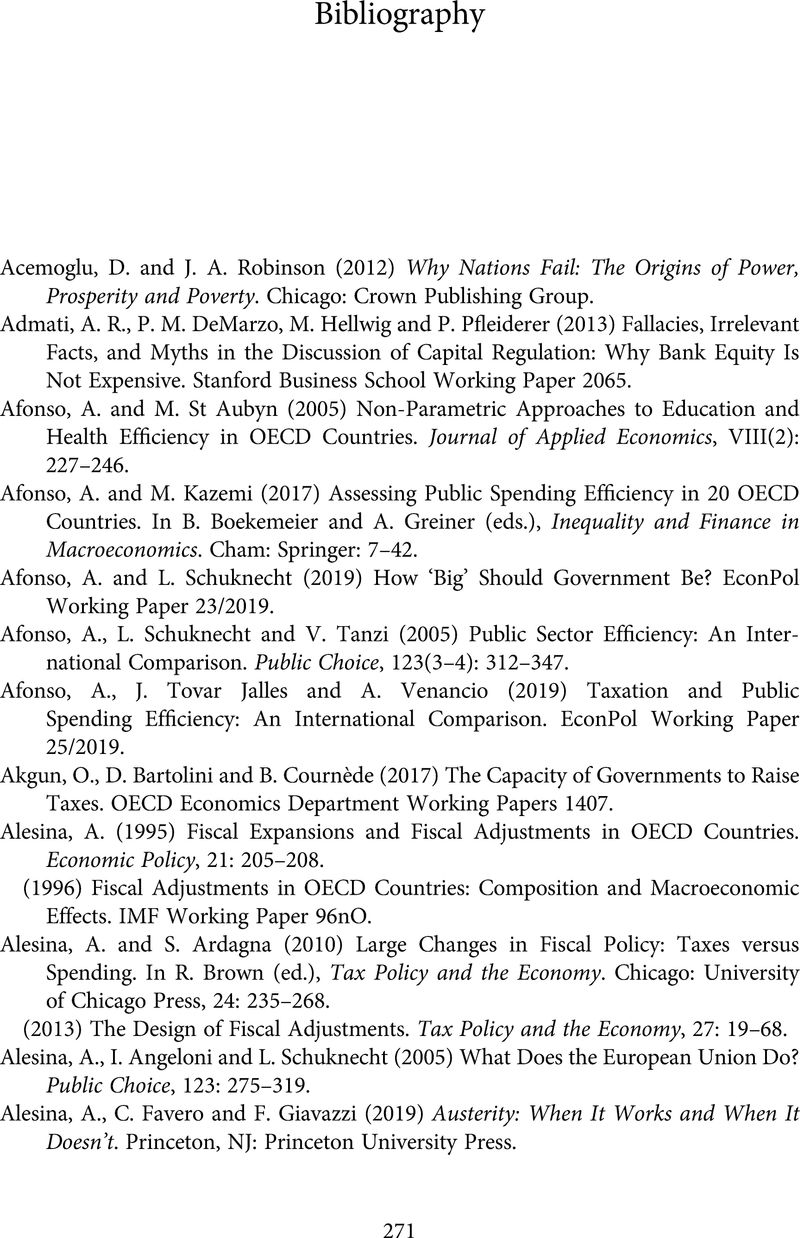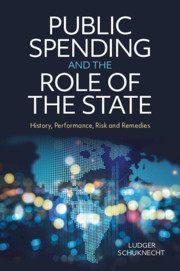Book contents
- Public Spending and the Role of the State
- Public Spending and the Role of the State
- Copyright page
- Dedication
- Contents
- Figures
- Tables
- Preface
- Acknowledgements
- Acronyms and Abbreviations
- Introduction
- Part I The Growth of Government
- Part II Value for Money
- Part III Fiscal Risks
- Part IV Remedies
- Table of Data Sources
- Bibliography
- Index
- References
Bibliography
Published online by Cambridge University Press: 30 October 2020
- Public Spending and the Role of the State
- Public Spending and the Role of the State
- Copyright page
- Dedication
- Contents
- Figures
- Tables
- Preface
- Acknowledgements
- Acronyms and Abbreviations
- Introduction
- Part I The Growth of Government
- Part II Value for Money
- Part III Fiscal Risks
- Part IV Remedies
- Table of Data Sources
- Bibliography
- Index
- References
Summary

- Type
- Chapter
- Information
- Public Spending and the Role of the StateHistory, Performance, Risk and Remedies, pp. 271 - 280Publisher: Cambridge University PressPrint publication year: 2020

